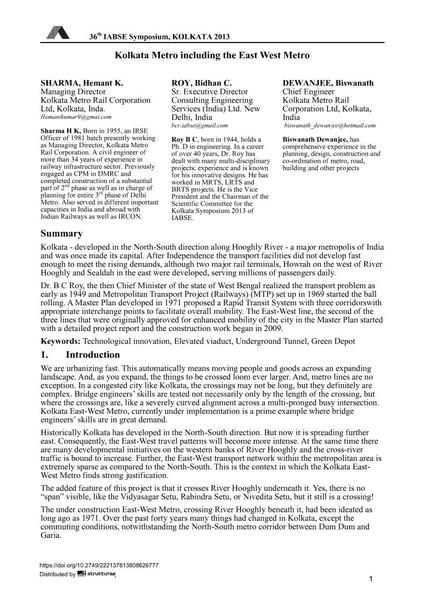Kolkata Metro including the East West Metro

|
|
|||||||||||
Bibliografische Angaben
| Autor(en): |
Sharma Hemant K
Roy Bidhan C Dewanjee Biswanath |
||||
|---|---|---|---|---|---|
| Medium: | Tagungsbeitrag | ||||
| Sprache(n): | Englisch | ||||
| Tagung: | IABSE Symposium: Long Span Bridges and Roofs - Development, Design and Implementation, Kolkata, India, 24-27 September 2013 | ||||
| Veröffentlicht in: | IABSE Symposium Kolkata 2013 | ||||
|
|||||
| Seite(n): | 1-10 | ||||
| Anzahl der Seiten (im PDF): | 10 | ||||
| Jahr: | 2013 | ||||
| DOI: | 10.2749/222137813808626777 | ||||
| Abstrakt: |
Kolkata - developed in the North-South direction along Hooghly River - a major metropolis of India and was once made its capital. After Independence the transport facilities did not develop fast enough to meet the rising demands, although two major rail terminals, Howrah on the west of River Hooghly and Sealdah in the east were developed, serving millions of passengers daily. Dr. B C Roy, the then Chief Minister of the state of West Bengal realized the transport problem as early as 1949 and Metropolitan Transport Project (Railways) (MTP) set up in 1969 started the ball rolling. A Master Plan developed in 1971 proposed a Rapid Transit System with three corridorswith appropriate interchange points to facilitate overall mobility. The East-West line, the second of the three lines that were originally approved for enhanced mobility of the city in the Master Plan started with a detailed project report and the construction work began in 2009. |
||||
